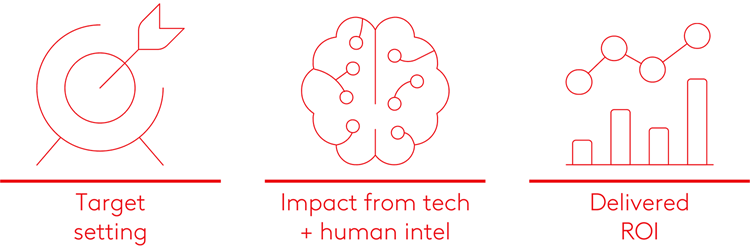There were many presentations from leading CX experts, but these are the three main themes in customer experience management I observed at X4 this year. All with a strong focus on optimising the human experience in order to deliver a brand’s promise and drive ROI.
1. The customer frontline
To be properly seen and heard is to be fully understood – according to Qualtrics. Organisations put 8% of their revenue at risk if they deliver a bad experience at the interface between customer and brand, the ‘frontline’ of CX. This is especially relevant in call centres, where customers talk to real people, and emotion, empathy and humanity all play a crucial role. As such, Qualtrics has introduced Customer Frontlines, a solution enabling organisations to analyse all the data available at this touchpoint, including structured and unstructured data from digital touchpoints such as websites and chatbots.
“The days of asking for customer feedback are over.”
They found that if a customer’s emotional needs are being met at a call centre, the wait time becomes obsolete, delivering twice the impact for customer satisfaction. However, 40% of frontline employees don’t believe they are set up for success and 50% of customers are unsatisfied with this type of service in general. This is where Qualtrics comes in. Customer Frontlines helps to deliver individualised training from feedback, allowing for real-time agent assistance via the platform – it’s essentially empathy in real-time, powered by AI.
At Kantar, we know that 90% of customer data is unstructured, so it is important to connect the dots between brand promise, expectations, CX, brand perceptions and customer behaviour to build a living and breathing customer experience journey that evolves with the constant change around us and contributes to business growth. Understanding your customer service journey can improve your ROI. In general, almost every presentation at X4 mentioned ROI – there’s a serious risk of revenue loss if the consumer’s emotional needs aren’t met.
Meeting expectations builds trust and drives brand value

Source: Kantar BrandZ database
2. Cultural change leads to increased ROI
In his talk, Kevin Warren, the CMO from UPS, said that change management is the hardest part of the customer experience discipline. Why? Because people need to change their mindset and their behaviour. But if you do it successfully the business return is inevitably visible: UPS doubled their stock price by driving cultural change toward customer centricity. Brad Anderson, Chief Product Officer at Qualtrics, said in his keynote: too many companies are focusing on experience measurement, not management. And we need to change this!At Kantar, we guide clients with actionable target-setting models, analysis and our insights-to-action framework, so that you make the right business decisions on what to improve for your customers. The combination of impact from technology and human intelligence is key for customer ROI, linking customer experiences to financial impact (and thinking like a CFO!).
How to improve customer ROI

3. It’s the customer journey (and the destination)
X4 made it abundantly clear that you need to optimise the whole customer journey and not just touchpoints in siloes. If a customer can experience the brand promise consistently across all touchpoints, then this optimised version of the brand’s customer experience journey is likely to deliver ROI as well as more human engagement.To prove this, Qualtrics has created a Customer Journey Optimiser, allowing organisations to see exactly where their customer journeys break. The tool also displays ROI, showing a company directly how much money it can save or the extra revenue to be won should the problem be fixed.
At Kantar, we’ve always been passionate about making the journey more human across all touchpoints. Our end-to-end CX transformation solutions combine deep expertise in CX and brand with extensive capabilities in consulting, research and unrivalled advanced customer analytics. We combine programme design, advisory and professional services to bring the Voice of the Customer (VoC) to the business and get the best value from the latest experience management technology.
Having this customer-focused mindset is central to CX transformation. Ultimately, it comes down to creating the right actions that customers can see and feel. The best technology and conceptual CX frameworks are not helpful if there is no buy-in from the organisation’s management and enough resources and budget available to drive change. To transform the business and become a truly customer-centric organisation, keep people at the centre.
This emphasis on driving a customer-obsessed culture is at the heart of CX at Kantar, along with consistent delivery throughout the customer journey and meticulous alignment with the brand promise. We mobilise businesses and empower people to embrace feedback and become customer-centric in approach and behaviour. Please get in touch to discuss how we can help you build a more customer-centric strategy that will drive brand growth.






